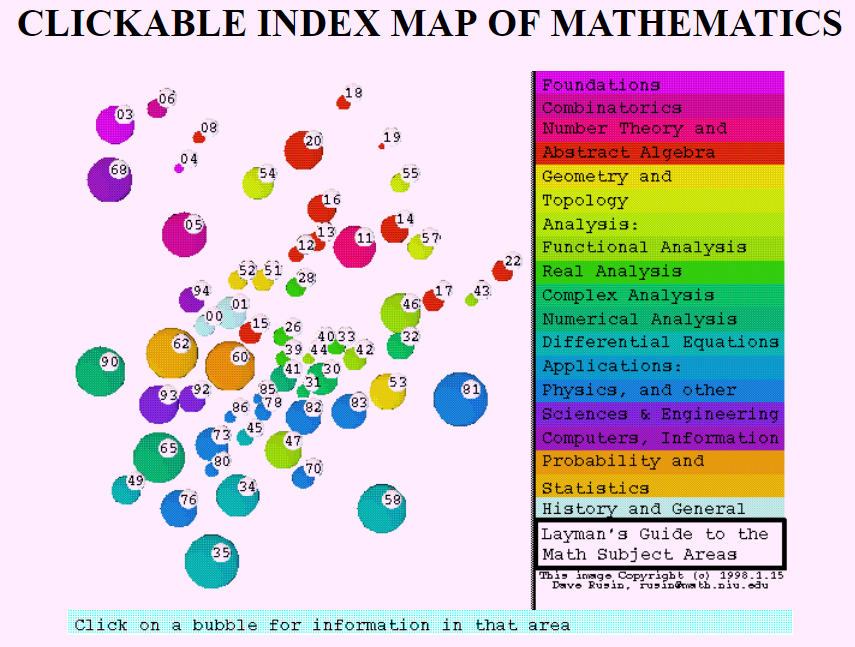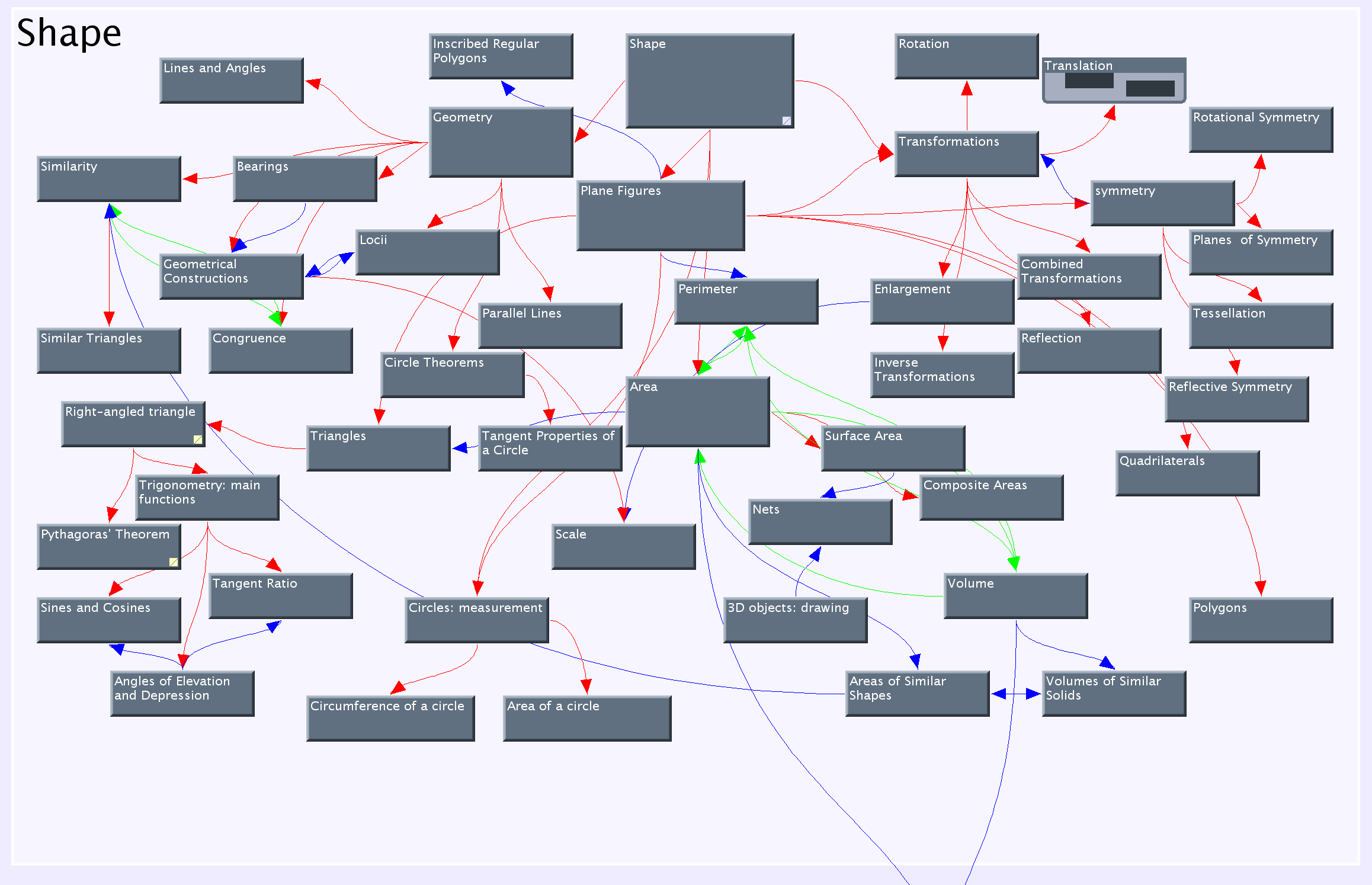I remember seeing a visualization in the form of a 2d (nodal) graph of all areas of academia, with math, physics and engineering over in one section, connecting in an arc to the central area of economics and statistics which was intermediate between it and the humanities. Psychology and sociology were in their own cluster between the humanities and econ/stats, while biology and medicine formed a huge cloud that branched towards almost everything, though it was further from the humanities than the sciences.
I'm afraid I don't have a link, which would illustrate it much better than I can.
Anyways, I wonder if there's something similar to this for mathematics alone, based on the specialities of co-authors, the references in research papers, common sense, etc. I'd be very interested to see what it looks like.





